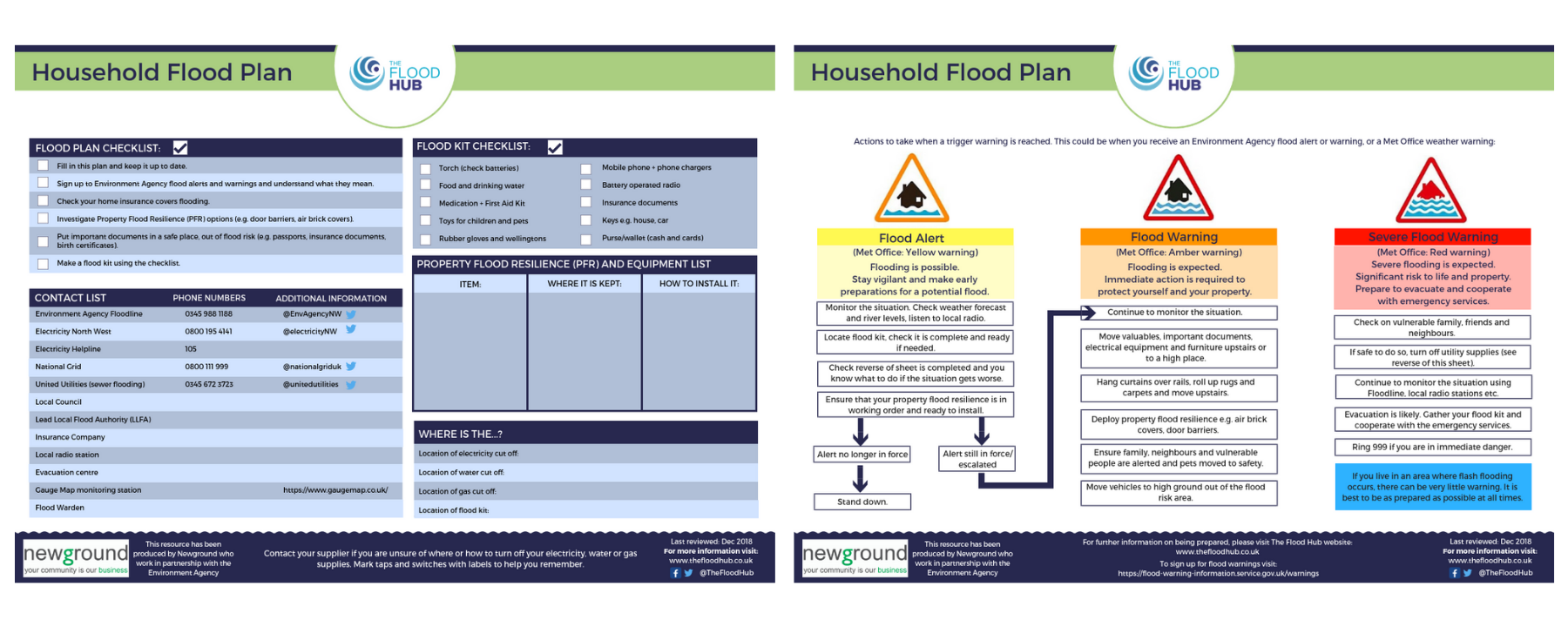Click here to see how to prepare for flooding
Preparing for a flood
Nowadays flooding can happen anywhere at any time of the year thereofee it is important that we prepare ourselves for it, before it happens. The main flooding in the village used to be from river flooding but a great deal of measures have been put into place to try and reduce the impact this may have.
In Lancaster Avenue there is a flood pump to pump the water on the fields away from the village
Near the A586 there are two big plug holes to allow water to flow out of one set of dkyes into the main dyke by the flood pump
A flood alert scheme has been put into place to alert households of the imminent danger of a flood
Flash Flooding
When it rains heavily and for a long period of time, the drains become overwhelmed by the amount of water – they overflow and the water on the surface has nowhere to go. It's normal for large puddles to appear when it rains heavily, but sometimes the puddles become more of a flood, stretching across whole streets, pavements and sometimes further beyond that – this is known as surface water flooding.
Flash floods can occur anywhere and without warning during and after heavy rainfall, making them much more difficult to predict. It's inconvenient and likely to cause disruption on the roads, but when it's more serious it can also cause damage to homes and businesses.
As this happens without warning therefore all we can do is warn households of the possibility of it happenig. Remember it is your responsibility to protect your home.
Know the flood risk of your home
Either click on the flood risk tab or call 0345 988 1188 to find the long term flood risk of your property. Flood risk
Planning ahead
Planning ahead for flooding will ensure that you can respond to the incident in the most efficient way. You can do this by creating a basic plan of action, checking your insurance has FloodRE, signing up to receive flood alerts and warnings. Rememver it is your responsibility to protect your property from flooding. Download the Flood Hub's 5-steps-to-flood-resilience.pdf for more information on how to become more prepared and more resilient to the potential impacts a flood can have.
Buying a house
We kive in a flood area both from the River Wyre and from surface water. You should consider these points before buying your new home. If you are unsure whether the property is located in a flood risk area, You can check the potential flood risk of any property using the link Flood Risk under Flash flooding on this page. You should check the local area and talk to residents before hand.
You can also download Flood Hub's ‘Purchasing Property and Flood Risk’ resource Purchasing-property-and-flood-risk.pdf which suggest things that you can do yourself to become more aware of a property’s potential flood risk.
Household Flood Plans
Even though flooding does not occur regurlarly from the river it is always a good idea to create a household flood plan if there is a chance that your house could be flooded, even if you have never been flooded before. It ensures that when receiving a flood alert or warning you know what actions to take, you can deploy any temporary measures efficiently, and you are best prepared to protect your property and belongings from the impacts of flooding.
The information on this page explains how to create your household plan. Household-flood-planning-guide.pdf which contains all of this information.
You can download a Household-Flood-Plan.pdf. The document contains a pre-populated flood plan and a blank flood plan which you can complete yourself and keep in a suitable, easy-to-see place in case a friend, relative or neighbour may need to find it in your absence.

Making a claim on insurance
If flooding has occurred and you decide to make a claim, it is important to call your insurance company as they will provide you with important information regarding what to do to ensure your claim remains valid.
Consider important documents
Place these safely in a waterproof bag